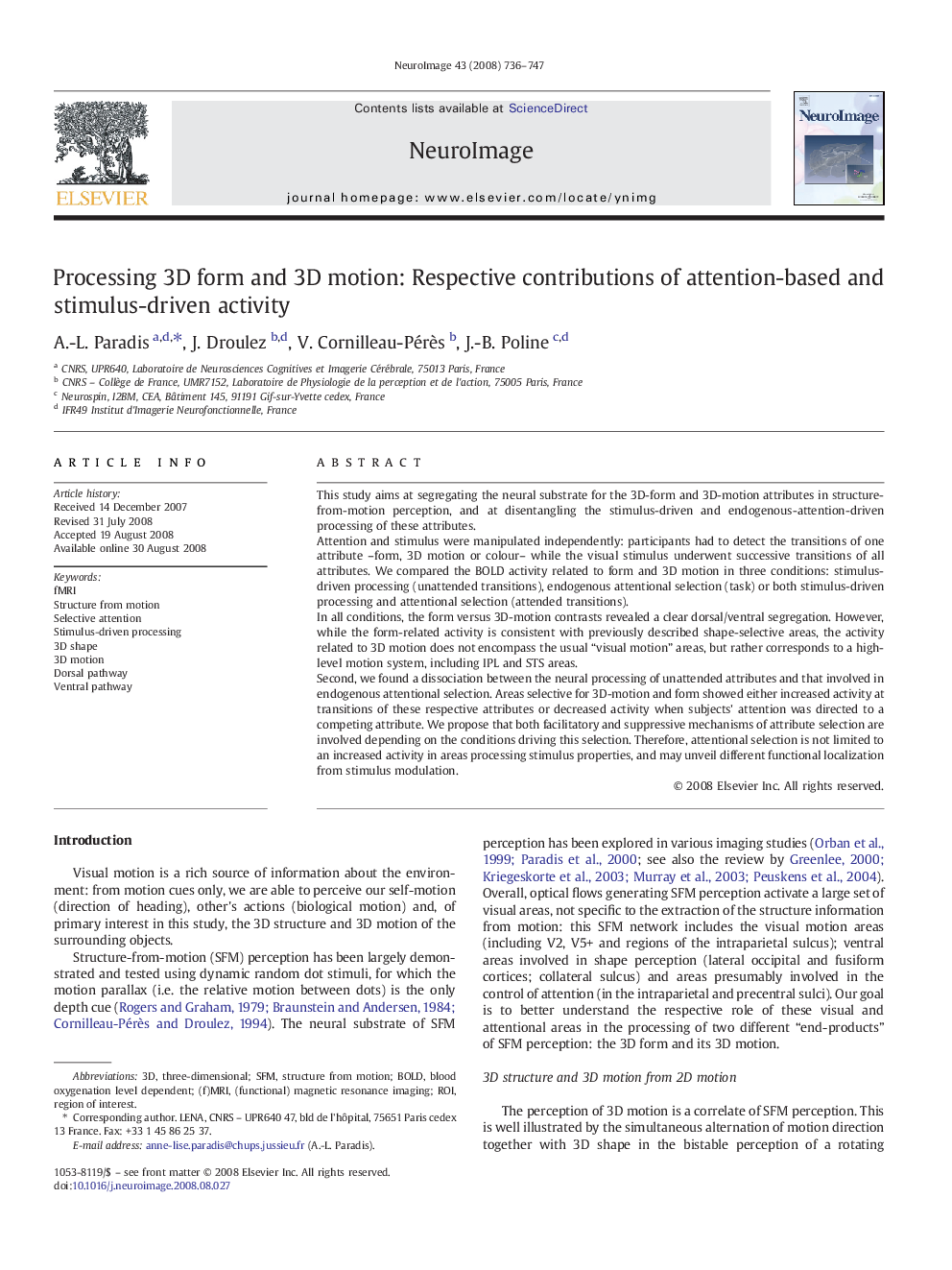| Article ID | Journal | Published Year | Pages | File Type |
|---|---|---|---|---|
| 3072484 | NeuroImage | 2008 | 12 Pages |
This study aims at segregating the neural substrate for the 3D-form and 3D-motion attributes in structure-from-motion perception, and at disentangling the stimulus-driven and endogenous-attention-driven processing of these attributes.Attention and stimulus were manipulated independently: participants had to detect the transitions of one attribute –form, 3D motion or colour– while the visual stimulus underwent successive transitions of all attributes. We compared the BOLD activity related to form and 3D motion in three conditions: stimulus-driven processing (unattended transitions), endogenous attentional selection (task) or both stimulus-driven processing and attentional selection (attended transitions).In all conditions, the form versus 3D-motion contrasts revealed a clear dorsal/ventral segregation. However, while the form-related activity is consistent with previously described shape-selective areas, the activity related to 3D motion does not encompass the usual “visual motion” areas, but rather corresponds to a high-level motion system, including IPL and STS areas.Second, we found a dissociation between the neural processing of unattended attributes and that involved in endogenous attentional selection. Areas selective for 3D-motion and form showed either increased activity at transitions of these respective attributes or decreased activity when subjects' attention was directed to a competing attribute. We propose that both facilitatory and suppressive mechanisms of attribute selection are involved depending on the conditions driving this selection. Therefore, attentional selection is not limited to an increased activity in areas processing stimulus properties, and may unveil different functional localization from stimulus modulation.
